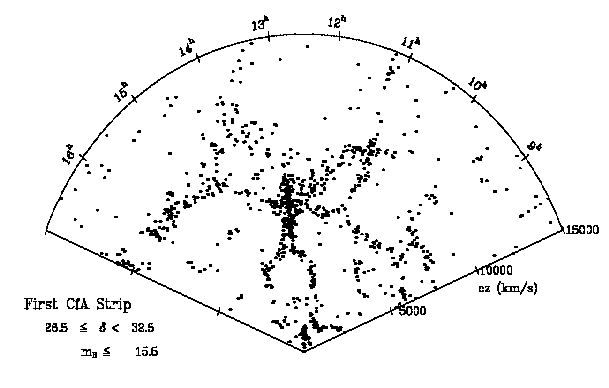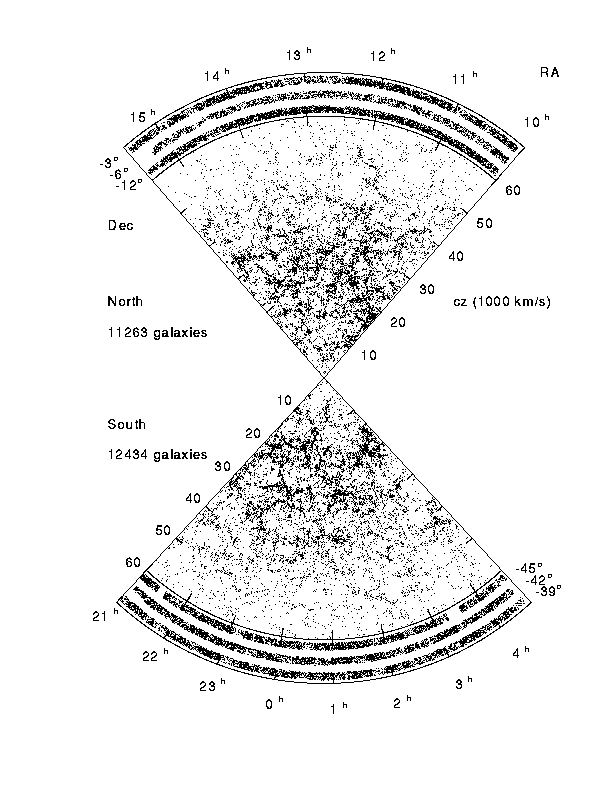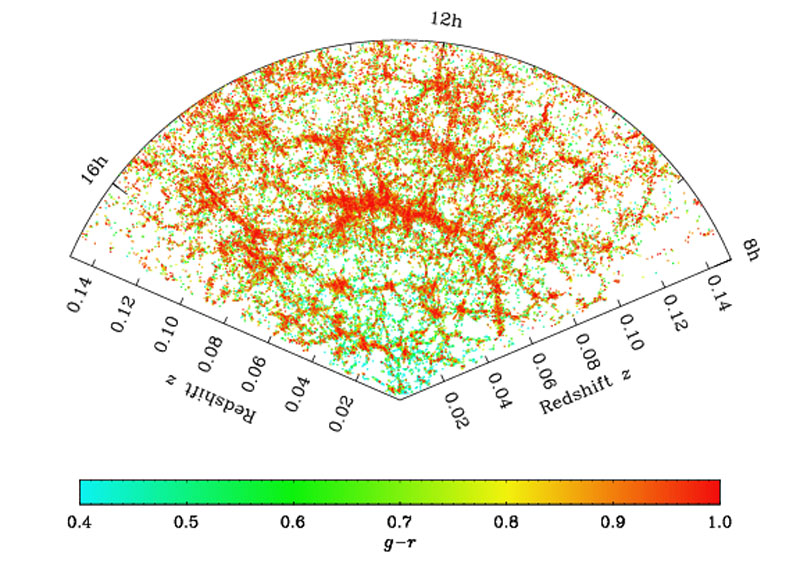
1985: The Stickman Cometh
Look at a picture from the CFA redshift survey. Think of it as a pie slice of the universe: the angular coordinate is position on the sky, while the radial coordinate is radial velocity, which is proportional to distance by the Hubble constant.

Galaxies are not distributed evenly in the universe. They are found along "walls" and "filaments" and there are vast "voids".
1990s: More Data
The LCRS Redshift Survey:

The Universe has structure on very large
scales!
2000s: The Sloan Digital Sky Survey
Galaxies in the SDSS main redshift survey, from Zehavi et al 2011. Note that red galaxies cluster together more strongly than blue galaxies.

Visualization of large scale structure from the Sloan Digital Sky Survey
We need to explain how all this structure came to be. Time for cosmology...